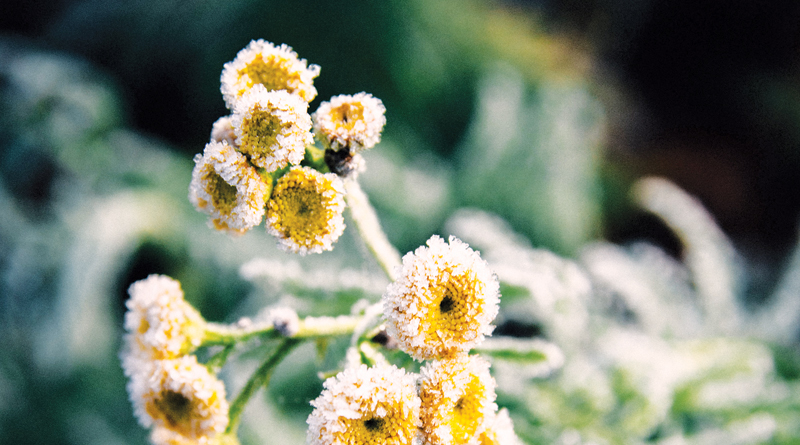PREPARING PLANTS FOR WINTER – Green-Thumb Gardener

We get many questions and calls this time of the year about preparing plants/gardens for winter. Here are some things to help your plants survive whatever Mother Nature has to offer this season.
Plants, especially evergreens, are very susceptible to drying out over the winter. The above ground parts continue to lose water out of them in the form of evaporation. Since the ground is frozen, roots cannot uptake water to replace this lost water. Sunny and windy conditions just increase the water loss. So it is extremely important that you maintain watering until the ground freezes. Thorough weekly soakings with a soaker hose can really help when there is not enough rainfall. On average, the ground usually freezes around Thanksgiving but that can change greatly with the weather. Along with this, always make sure that the soil around your plants drains well. Our heavy clay soils need amendment to help with this when plants are planted. This will help in the spring as cold snows melt and the plants sit in the water, often causing root rot.
Choosing plants that are hardy to our zone will certainly help in dealing with cold temperatures. Along with that, 3 to 4 inches of winter mulch can help regulate soil temperatures and is very helpful with the heaving that can occur during freeze/thaw cycles. Straw, healthy leaves, pine needles, and wood bark are good at trapping air between the layers and thus helping insulate the roots. Decorative stone is very pretty but is not effective in providing insulation.
Some plants, such as roses, may need additional protection around the plant. Canes can be pulled together slightly with twine and then chicken wire, burlap, and/or canvas can be wrapped around the outside. Clean, dry, healthy leaves can be put inside the protective cover. This method can be very helpful for multi-stemmed plants that have weaker stems and are easily damaged during ice events. Remember to remove heavy snow build-up on these plants as soon as possible but it is best to let ice melt rather than trying to knock it off.
Most pruning should be stopped after Aug. 15 to allow plants to settle in and store energy for the winter. Pruning for most should occur as they are dormant in the late winter and early spring. For perennials that die back to the ground, you can then clean up the debris or leave it until spring.
Let’s hope for a beautiful winter with steady cold temperatures and a nice snow cover to protect our gardens!
This article is sponsored by McNamara at Sand Point, which has 2 acres of production greenhouses, retail florist and gift shop, as well as retail garden center and wholesale plant business. Contact McNamara by calling 260-747-4131 or visit 4322 DeForest Ave, Ft. Wayne, IN 46809.
- Celebrating 20 Years Of Community At The Stand - April 12, 2024
- First Positive Case Of Chronic Wasting Disease In Indiana - April 12, 2024
- Southwest Allen County Schools Embark On Major Tree Plantings - April 12, 2024


